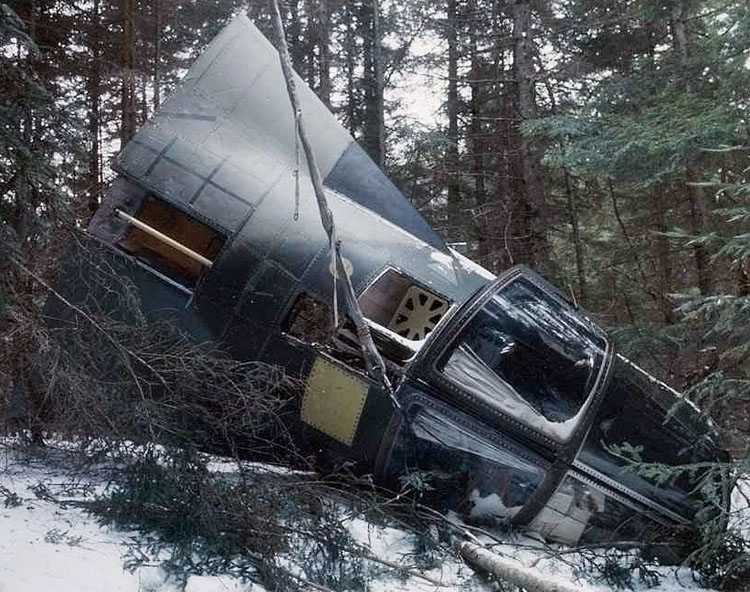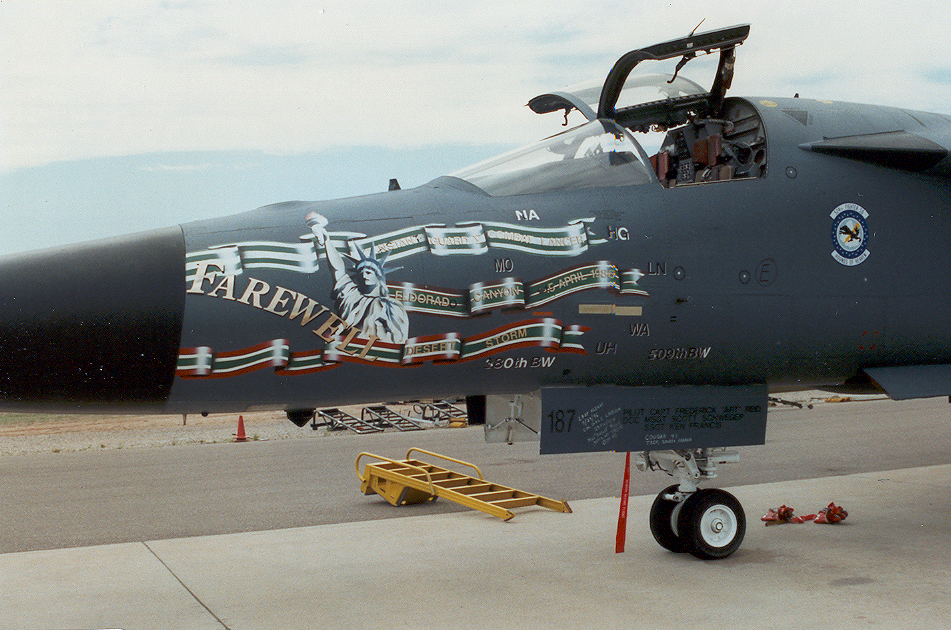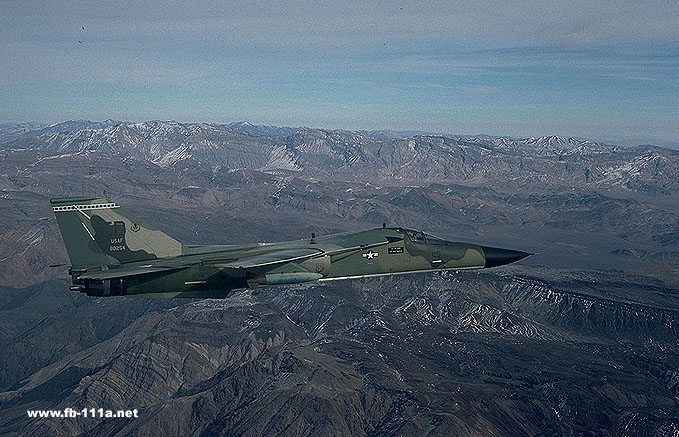F-111.net
The website dedicated to all variants of the F-111


Welcome back to F-111.net with a new look. After 7 years in storage, the website dedicated to the General Dynamics F-111 is back online. Just like any major overhaul, some fine tuning may be required. This is the place to learn about the F-111 and its variants, except for the FB-111A and Gs which you will find on our companion site. From its early days of testing and combat operations to its final days and retirement to the Boneyard. You will find photo galleries as well. You will learn about the Royal Australian Air Force F-111s in service. The RAAF was the only foreign operator with the F-111C/ RF-111C and F-111G. Please, feel free to contact us with your comments at the bottom of its page. You can also find us on Facebook with the logo on this page. Hoping you will enjoy your visit and any contributions to the site is more than welcome.
The F-111 Community will dedicate a Memorial to the men and women who supported the F/FB/EF-111 on 14 October, 2022 at the National Museum of the USAF in Dayton, OH. For registration and event planning information, see F-111 Memorial, National Museum of the United States Air Force (f111memorial.org) Please join us! F-111 Memorial Foundation

The General Dynamics F-111 was one of the most controversial aircraft that ever flew. Perhaps no other aircraft before or since has been so bitterly criticized in the media. It suffered a protracted development cycle in which numerous serious problems had to be identified and repaired, and cost overruns came to be a serious concern.
read more
On October 24, 1963, the government of Australia agreed to purchase 24 F-111As. The Australian version was to be designated F-111C. The first F-111C was delivered on September 6, 1968. Ect...
read more

The F-111 has served in a number of combat operations during the past thirty-five years. In that time, there have been 13 losses, only one of which being a confirmed shoot-down. The remainder of the losses were mid-air collisions, flight into terrain, or unknown. There are 13 aircrew who remain missing, presumed killed in action.
read more

This page aims to give credit to all the dedicated people who help to preserve F-111 aircraft of all models throughout the United States of America, the United Kingdom and Australia
view moreThe Aircraft Maintenance And Regeneration Center (AMARC), also known as "The Boneyard" was the resting place of most of the remaining F-111s.
view more

The F-111 in its many variants have been in operations in the United States Air Force and Royal Australian Air Force with many units.
view more


In early 1968, the USAF decided to rush a small detachment of F-111As to Southeast Asia for combat test and evaluation under a program known as Combat Lancer. Six F-111As of the 428th Tactical Fighter Squadron, 474th Tactical Fighter Wing were allocated to the Combat Lancer program, and departed Nellis AFB for Takhli on 15 March 1968.
read more

F-111 operations in SEA during Combat Lancer and Constant Guard/Linebacker.
read more27th Tactical Fighter Wing, Cannon AFB and 366th Tactical Fighter Wing, Mountain Home AFB photo galleries.
view more

20th Tactical Fighter Wing, RAF Upper Heyford, and 48th Tactical Fighter Wing, RAF Lakenhealth photo galleries.
view more

The 1986 United States bombing of Lybia, code-named Operation "El Dorado Canyon", comprised air strikes by the United States against Libya on Tuesday 15 April 1986.
read more

To replace the aging Douglas EB-66, the USAF contracted with Grumman in 1972 to convert 42 existing F-111As into electronic warfare aircraft.
read moreThe development of the high-speed F-111 aircraft caused the need for an improved egress system. The ejectable crew module was designed to meet this need.
read more

The production list is divided in two pages with aicraft history for each one
63-9766 to 68-0180 68-0181 to 74-0188On 29 July 1996, the 27th FW from Cannon AFB, NM said Farewell to the F-111when they sent four F-111F to D-M AFB, AZ to be put in storage at AMARC.
read more

After 7 years in storage, the website dedicated to preserve interest in the General Dynamics FB-111A is back online. Learn more about the Strategic Air Command FB-111A and the F-111G in service with the Tactical Air Command and the Royal Australian Air Force.
Visit www.FB-111.net
This F-111 Aardvark Internet site (aka F-111.net) does not represent the views of Boeing, Convair, General Dynamics, Grumman, Lockheed Martin, the United States Air Force, the Royal Australian Air Force or any other company or organisation which may be named herein. Should any company, organisation or individual feel grieved that we are using their logo or product without permission, please contact the webmaster by email. Significant use is made of images released by the Australian Defence Force (ADF). These images are Crown Copyright, meaning that they may be reproduced but not for third party monetary gain. Photos used on the site come from many sources, both public such as DVIC and private collections. F-111.net is a 'non-for-profit' website.
© www.F-111.net (2021). David Riddel (1996-2000) David de Botton (2000- )
While there have been hundreds of contributors to F-111.net during the years since it's inception, some individuals must be mentioned in particular for their time and efforts. These people include (in alphabetical order): Joe Arnold, Joe Baugher, Steve Bosang, David de Botton, Philippe Colin, Peter Davies, David Dixon, John Freedman, Ad De Graaff, Steve Hyre, Mike Kaplan, Carlo Kopp, Curt Lenz, Doug Loeffler, Don Logan, Cedric Mitchell, David Riddel, Jim Rotramel, Robert Styger, Tony Thornborough, Stephen Thrum and Annie Waite. Of course, many thanks to all the photographers and others who agreed to share their work on this site.